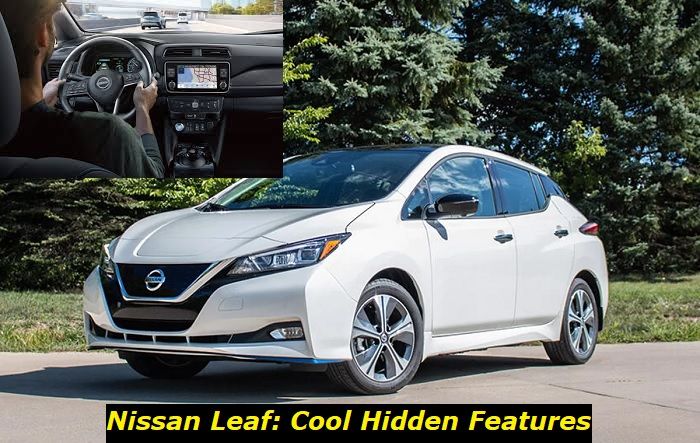Today, we enjoy the sixth generation of the Ford Explorer in the US which was introduced back in 2020. The vehicle offers several available powertrains, and today, I will focus on the hybrid engine. Surprisingly, there is no PHEV Explorer available in the US while the one is available in some European countries.
In this article, I will take a look at the 3.3L V6 Hybrid powerplant in the new Ford Explorer SUV and will tell you about its longevity, reliability, and some key features. I will also figure out what common problems you can have with this engine if you eventually decide to buy it. Even though I'm about to criticize the engine, I still think this is one of the most decent hybrid powerplants for big SUVs on the market.
.jpg)
Key features and my opinion about the engine
- Production years:2018-2023
- Average lifespan of 3.3L V6 Duratec:200,000-230,000 miles
- Fuel supply type:direct injection
- Power range:285-290 hp
- Fuel efficiency:average
- Engine block material:aluminum
- Engine reliability score:medium
- The most common problems:water pump failure, phasers are pretty weak, oil leaks are common.
What should you know about the 3.3L V6 Cyclone Hybrid engine in the Explorer?
So, the new Ford Explorer offers you a great 3.3L V6 engine that works in pair with a small 44-hp electric motor. The system is accompanied by a 1.5-kWh Li-Ion battery pack. This doesn't allow the Explorer Hybrid to have any all-electric range and you also can't recharge the battery from a grid.
Also, the new Explorer offers two EcoBoost engines without hybrid technologies - the 2.3L base option and also the performance-oriented 3.0L V6 EcoBoost. It's interesting that the latter is available in Europe with a 15-kWh battery pack and a more powerful electric motor as a PHEV hybrid. And I really wonder why they don't offer this in the US.
So, here are some key facts about the 3.3L hybrid powerplant:
- the heart of the powerplant is the non-turbocharged 3.3L V6 Duratec 33 engine derived from the legendary Duratec 35;
- this engine is used in non-hybrid versions of the F-150 and the Police Interceptor, so we already know quite a lot about it;
- the electric motor is pretty small and not really powerful, it just adds some torque to the gasoline engine;
- this is a Full Hybrid vehicle, not a PHEV, so you can't charge it and you can't drive it completely relying on electric power;
- the gas engine has both direct and port injection which should save it from carbon buildup problems;
- the powerplant works in pair with the 10-speed automatic transmission (10R60) which should be just fine in terms of reliability;
- the gas mileage for the Explorer 3.3L V6 Hybrid is claimed to be 27 MPG in the city and 28 MPG on highways.
You may notice that the hybrid technology basically serves to improve gas mileage in the city. So, if you are mostly driving on highways, you will not even feel any advantages of the hybrid powertrain. On highways, the 1.5-kWh battery is helpless and it almost doesn't work.
The system though works perfectly in the city assisting the V6 engine and adding some torque to the system. The overall power of 318 hp and the torque of 322 lb-ft are pretty good - actually better than in the 2.3L EcoBoost version. But you should think about overpaying. The base 2.3L version costs about $38,000 while the cheapest hybrid comes with the price of about $55,000. The difference is mind-blowing and personally, I don't want to pay that much for the privilege of better gas mileage in the city traffic.
Of course, you need to know that the hybrid comes in Limited trim and the Limited non-hybrid will cost you about $48,000, so the actual difference is not that huge.
How long will the hybrid engine in the Explorer last?
Maybe, this is one of the most durable and reliable hybrid engines in modern big SUVs. The 3.3L V6 Duratec engine may last over 250,000 miles if maintained well. With some repairs, it will be good to go even more than that. No turbos, no complicated technologies, no problems with the timing systems, etc. All common issues were solved in the Duratec 35 before it was converter to the Duratec 33.
The transmission is also going to last long enough. Also, this type of transmission can easily be repaired without replacement if something goes wrong. I'm pretty sure that at around 150,000 miles, you will need to repair this transmission and change some parts in it. But it still costs less than replacing a potential eCVT transmission that could be used in this powertrain.
Also, the battery pack is used very carefully, so it will live over 120,000 miles and then will need replacement. The new pack will give you another 120,000+ miles. For this time, it will save you about 500 gallons of fuel given you drive 50% of your time on highways and another 50% - in the city traffic. The battery pack won't cost you too much - it's just a 1.5-kWh pack.
So, the overall longevity of this engine is quite good and you won't regret your purchase if you decide to own the Explorer till it reaches its death. In terms of the durability, this car is actually good. But it still doesn't convince me to pay $17,000 more than for a Base 2.3L EcoBoost version.
What are the common problems with the 3.3L V6 Hybrid engine?
The Explorer Hybrid engine is one of the most reliable hybrid powertrains in today's market in the US. But it still comes with several pinches of salt in it, just like any other engine in the world. Please don't take it too seriously because not all Explorer owners will face all these issues. Just keep in mind that such problems are possible and you may want to do something to prevent them.
Here are the common issues with the Explorer Hybrid engine:
1. Sudden overheating because of water pump failure
This engine is prone to early water-pump failure and it seems that the issue wasn't addressed properly by Ford. There are some service bulletins but no recalls, so you will have to pay for the failed water pump unless it fails within the warranty period.
If you notice that the Explorer hybrid engine started overheating permanently, it's likely that the water pump is not good anymore. Have it inspected as soon as possible to avoid overheating damage to the V6 engine.
2. Battery is exhausted early
If you only drive in the city, the 1.5-kWh battery pack will be charged and discharged several times per day. The Li-Ion battery pack is not eternal and after about a thousand of charges, it will start losing its juice.
You will see that the gas mileage deteriorates gradually. When you get about 22-24 MPG in the city, it means that the battery is almost dead. The replacement battery from Ford will cost you quite a lot, but I see no other optimal solution but buying this OEM battery.
3. The timing chain problems
This engine, just like the Duratec 35, uses the timing chain to drive the shafts and ensure the proper timing. At about 100,000 miles, you may hear that the engine starts rattling a bit, especially when cold. It means that the tensioner has already compensated everything it could and the chain keeps stretching.
If you don't replace the chain at this moment, it may jump or even break. This will lead to bad engine damage and very high repair costs. I recommend checking the timing chain at 100,000 miles and then every 20K miles to catch the moment when it needs replacement.
4. Gas mileage issues
Unfortunately, your hybrid will only be economical for about 50K miles. After that, the battery will deteriorate, and the fuel injection will become less efficient and precise. This means that in order to keep getting that wonderful mileage from this engine, you will need to invest in it regularly.
Also, the engine loves proper regular maintenance (oil and filter change). Otherwise, it will most likely fail much earlier than you can expect.
How can you prolong the life of the 3.3L V6 Cyclone Hybrid engine in Ford?
The Explorer has a wonderful hybrid engine based on the rock-solid Duratec engine. But it will still need your attention to live longer. Here are just some of the key factors that will prolong the life of the engine and make repair costs much more reasonable:
- regular oil and filters change is extremely important;
- check the chain at 100K miles and replace it at 150,000 miles even if it still seems OK;
- check the battery health regularly to maintain the proper gas mileage;
- don't let the engine overheat and react immediately to any overheating issues;
- don't ignore warning lights and error messages - this will save the engine's life one time.
You may see that this is a practical and durable engine that just needs a little attention and care from you to hit the 250,000-mile mark. And it's not that often that we can give such predictions about any of the modern engines available on the market.
About the authors
The CarAraC research team is composed of seasoned auto mechanics and automotive industry professionals, including individuals with advanced degrees and certifications in their field. Our team members boast prestigious credentials, reflecting their extensive knowledge and skills. These qualifications include: IMI: Institute of the Motor Industry, ASE-Certified Master Automobile Technicians; Coventry University, Graduate of MA in Automotive Journalism; Politecnico di Torino, Italy, MS Automotive Engineering; Ss. Cyril and Methodius University in Skopje, Mechanical University in Skopje; TOC Automotive College; DHA Suffa University, Department of Mechanical Engineering






Add comment